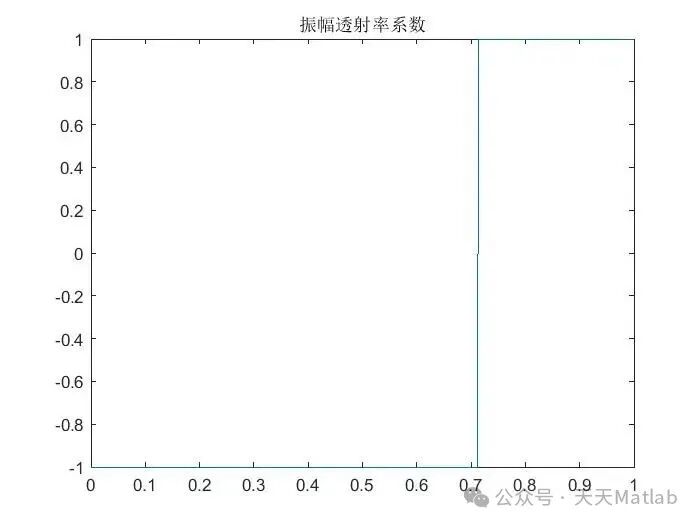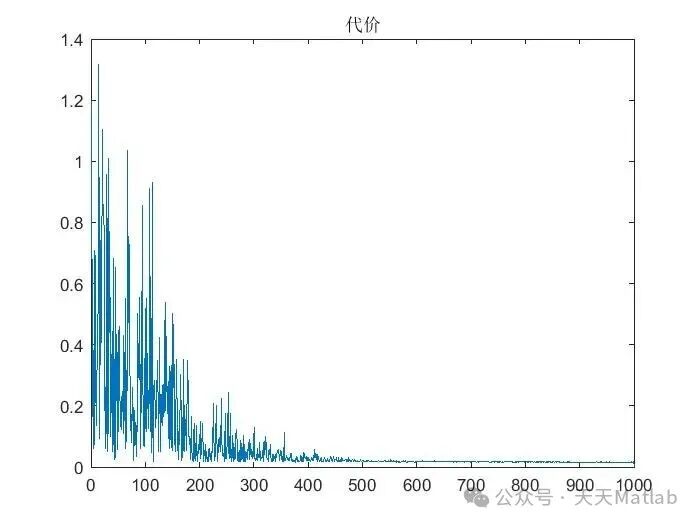✅ Author Profile: A passionate researcher and MATLAB simulation developer, skilled in data processing, modeling simulation, program design, complete code acquisition, paper reproduction, and scientific simulation.
🍎 Previous reviews, follow the personal homepage:MATLAB Research Studio
🍊 Personal motto: Investigate things to gain knowledge, complete MATLAB code and simulation consultation available via private message.
🔥 Content Introduction
1. Introduction
In the field of optics, the Dammann grating is an important diffractive optical element that efficiently splits a single laser beam into a lattice of beams with a specific distribution. It plays a crucial role in various cutting-edge fields such as laser processing, optical imaging, optical communication, and optical measurement. For example, in laser processing, lattice beams can achieve parallel processing of materials, significantly improving processing efficiency; in optical measurement, a specific distribution of lattice beams helps achieve high-precision displacement or deformation measurements. Therefore, in-depth research and mastery of the design methods of Dammann gratings have significant theoretical significance and practical application value.
2. Basic Principles of Dammann Grating
2.1 Basics of Diffraction Theory
The working principle of the Dammann grating is based on the theory of light diffraction, specifically relying on the Fourier transform properties in scalar diffraction theory. When a monochromatic parallel light beam is incident perpendicularly onto the Dammann grating, the periodic structure of the grating modulates the incident light, causing diffraction in space. Mathematically, the transmittance function of the grating can be viewed as a periodic function, and according to Fourier optics theory, its diffraction light field distribution in the far field (Fraunhofer diffraction region) is the Fourier transform of the grating’s transmittance function. By reasonably designing the transmittance function of the grating, the desired lattice beam distribution can be obtained in the far field.
2.2 Phase Modulation Characteristics
The Dammann grating is essentially a phase-type diffractive element that achieves specific diffraction effects by modulating the phase of the incident light. Different regions of the grating have different phase delays, and this phase difference leads to interference of light during propagation, forming the desired lattice pattern. Typically, Dammann gratings adopt a binary optical structure, meaning the phase distribution of the grating has only two states (ideal case): 0 and 2π. By controlling the distribution and proportion of these two phase states, precise control of the diffracted light field can be achieved.
3. Steps for Designing Dammann Grating
3.1 Determine Design Specifications
Before designing the Dammann grating, it is essential to clarify specific design specifications. These specifications include the desired number of lattice beams, the arrangement shape of the lattice (such as rectangular, triangular, circular, etc.), the energy uniformity requirements of each lattice beam, the working wavelength, and the size of the grating. For instance, if applied to laser processing, higher energy uniformity and larger lattice scale may be required; if used for optical imaging, higher precision in beam positioning is necessary.
3.2 Theoretical Calculations
Based on the determined design specifications, calculations are performed using Fourier optics and diffraction theory. For a simple rectangular Dammann grating, analytical methods can be used for preliminary design. Taking a two-dimensional rectangular lattice as an example, suppose the grating has periods in the x and y directions of Tx and Ty, respectively. By calculating the diffraction coefficients at different spatial frequencies, the phase distribution function of the grating can be determined. However, for complex lattice distributions or designs requiring high precision, numerical methods such as the Iterative Fourier Transform Algorithm (IFTA) are typically needed. IFTA iteratively adjusts the phase distribution of the grating to make the calculated diffraction light field as close as possible to the desired lattice distribution. The specific process is as follows:
- Initialize a random phase distribution as the initial phase of the grating;
- Multiply this phase distribution by a monochromatic plane wave with unit amplitude, and perform a Fourier transform to obtain its diffraction light field distribution in the far field;
- Compare the calculated diffraction light field distribution with the desired lattice distribution, and adjust the phase distribution of the grating based on the differences;
- Repeat the above steps until the error between the calculated diffraction light field distribution and the desired distribution meets the set precision requirements.
⛳️ Results




📣 Sample Code
%% Intermediate Variables Init
temp = opt_tmax; % Current iteration temperature
a = sort(rand(1, 2*grt_l)); % Phase mutation point coordinates
t = disc_samp(a, grt_spd); % Amplitude transmittance
p = diff_effi(t, grt_n); % Diffraction efficiency of each light intensity
eval = cost(p, opt_alpha, grt_dc); % Cost
eval_all = zeros(1, 1000); % Cost storage vector
🔗 References
[1] Xi Peng, Zhou Changhe, Zhao Shuai, et al. Design and Implementation of 64×64 Dammann Grating [J]. Chinese Laser, 2001, 28(4). DOI:10.3321/j.issn:0258-7025.2001.04.022.
[2] Xi Peng, ZHOU, Chang-He, et al. Design and Implementation of 64×64 Dammann Grating [J]. Chinese Laser, 2001. DOI:CNKI:SUN:JJZZ.0.2001-04-023.
🎈 Some theoretical references are from online literature; if there is any infringement, please contact the author for deletion.
👇 Follow me to receive a wealth of MATLAB e-books and mathematical modeling materials
🏆 Our team specializes in guiding customized MATLAB simulations in various research fields, helping to realize research dreams:
🌈 Various intelligent optimization algorithm improvements and applications
Production scheduling, economic scheduling, assembly line scheduling, charging optimization, workshop scheduling, departure optimization, reservoir scheduling, three-dimensional packing, logistics site selection, cargo location optimization, bus scheduling optimization, charging pile layout optimization, workshop layout optimization, container ship loading optimization, pump combination optimization, medical resource allocation optimization, facility layout optimization, visual domain base station and drone site selection optimization, knapsack problem, wind farm layout, time slot allocation optimization, optimal distributed generation unit allocation, multi-stage pipeline maintenance, factory-center-demand point three-level site selection problem, emergency life material distribution center site selection, base station site selection, road lamp post arrangement, hub node deployment, transmission line typhoon monitoring devices, container scheduling, unit optimization, investment optimization portfolio, cloud server combination optimization, antenna linear array distribution optimization, CVRP problem, VRPPD problem, multi-center VRP problem, multi-layer network VRP problem, multi-center multi-vehicle VRP problem, dynamic VRP problem, two-layer vehicle routing planning (2E-VRP), electric vehicle routing planning (EVRP), oil-electric hybrid vehicle routing planning, hybrid flow shop problem, order splitting scheduling problem, bus scheduling optimization problem, flight shuttle vehicle scheduling problem, site selection path planning problem, port scheduling, port bridge scheduling, parking space allocation, airport flight scheduling, leak source localization
🌈 Machine learning and deep learning time series, regression, classification, clustering, and dimensionality reduction
2.1 BP time series, regression prediction, and classification
2.2 ENS voice neural network time series, regression prediction, and classification
2.3 SVM/CNN-SVM/LSSVM/RVM support vector machine series time series, regression prediction, and classification
2.4 CNN|TCN|GCN convolutional neural network series time series, regression prediction, and classification
2.5 ELM/KELM/RELM/DELM extreme learning machine series time series, regression prediction, and classification
2.6 GRU/Bi-GRU/CNN-GRU/CNN-BiGRU gated neural network time series, regression prediction, and classification
2.7 Elman recurrent neural network time series, regression prediction, and classification
2.8 LSTM/BiLSTM/CNN-LSTM/CNN-BiLSTM long short-term memory neural network series time series, regression prediction, and classification
2.9 RBF radial basis function neural network time series, regression prediction, and classification